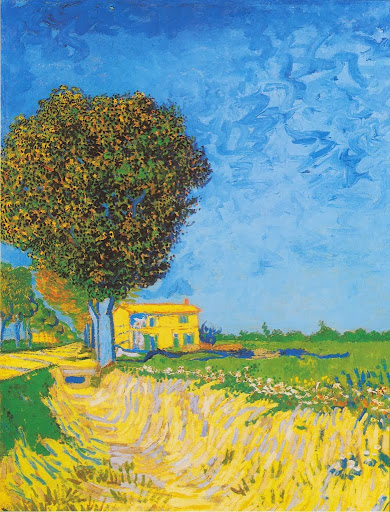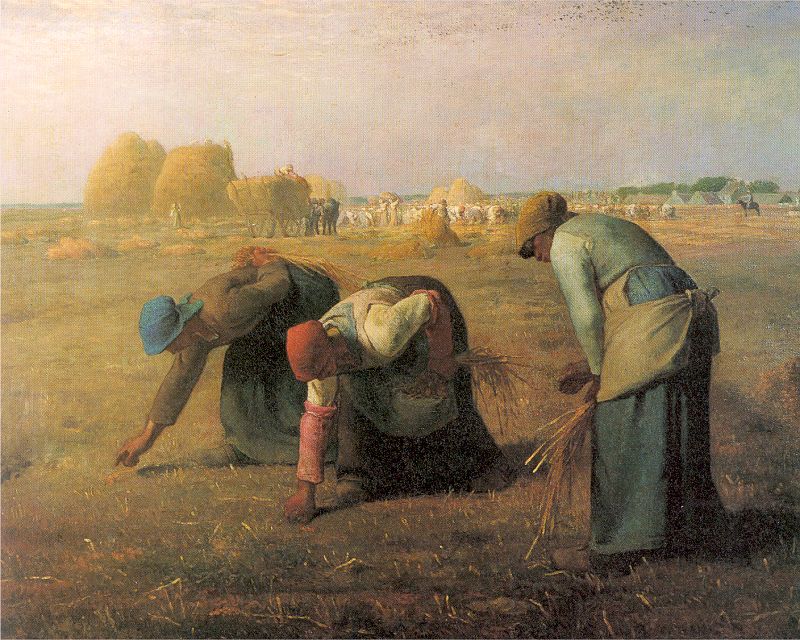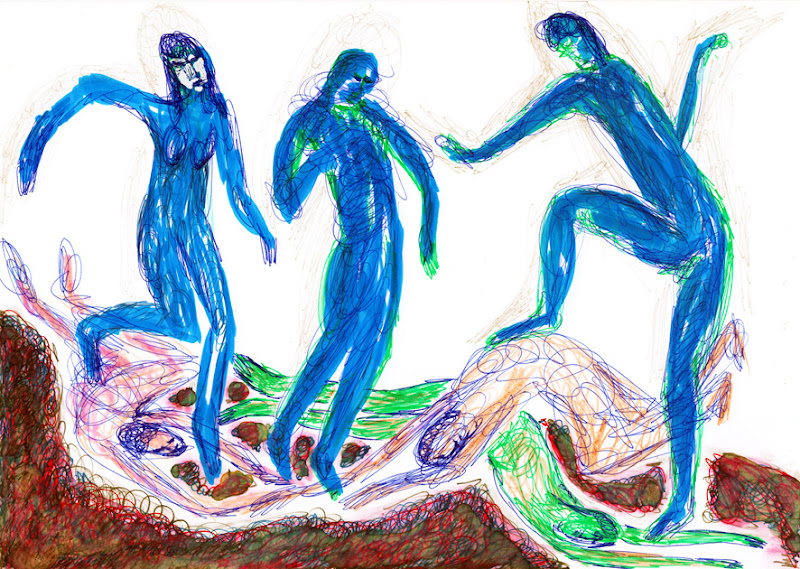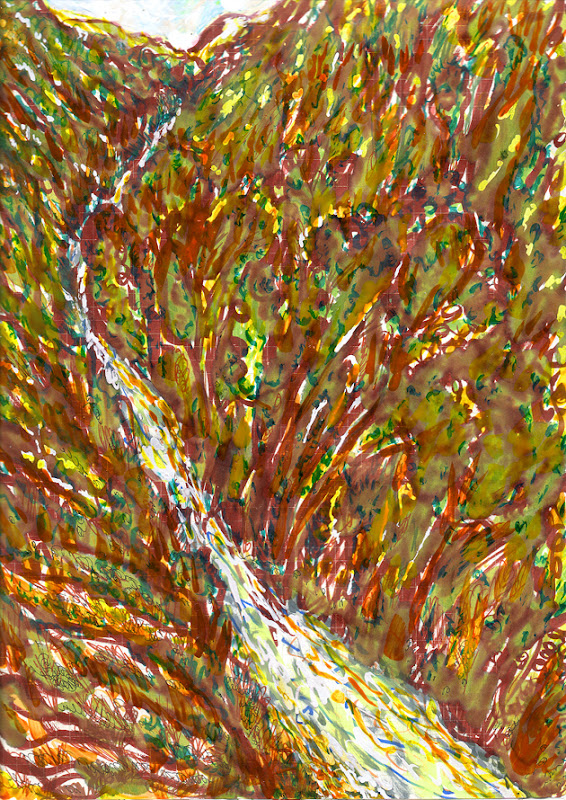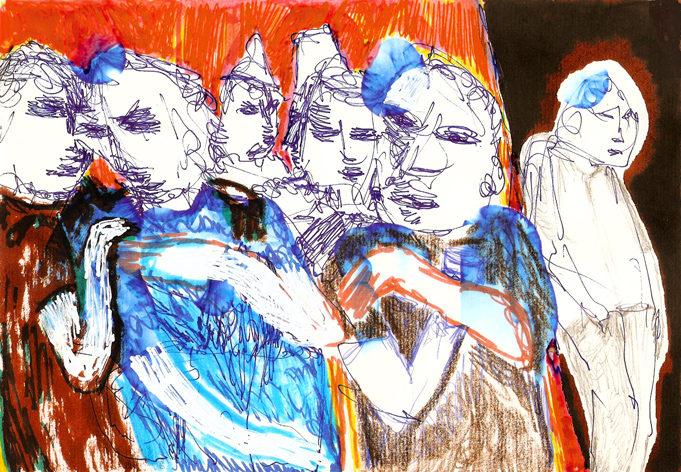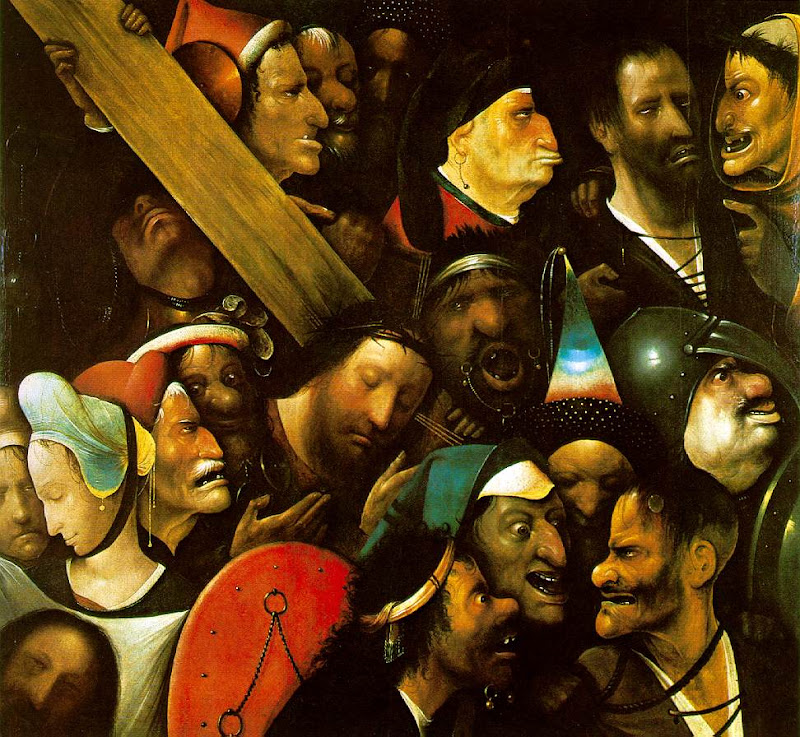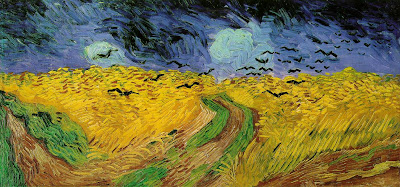but vincent van gogh is an example of a visual artist who also wrote prolifically, on art. of course, contrary to multatuli he never intended these writings to become public, they were after all personal letters, mostly to his brother theo, who was a close supporter of vincent. theo died shortly after vincent, and fortunately for us theo's young widow johanna bonger took great pains to spread appreciation of both vincent's art and the brothers' letters.
crediting multatuli with the invention of blogging is probably unfair to earlier minds which i'm unaware of. and of course, there was an essential ingredient missing: pictures. in vincent's letters one does see pictures being integrated, abundantly so and in much the same way as on this blog. [so even though i would like to be original or prolific or whatever epithet: the truth is that i'm neither of all these things, compared to certain giants in the past and present. but does it matter?]
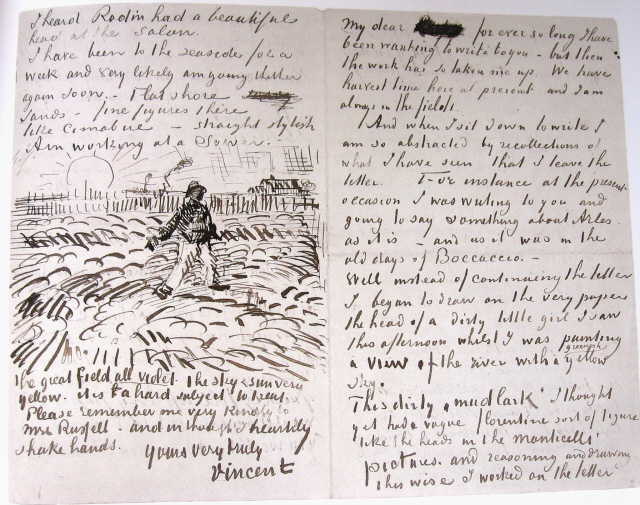
excerpt from letter to john russell, vincent van gogh (click on the image for an enlargement)
the letter is in english (which is why i chose it for this post) since john peter russell was an australian artist who made vincent's acquaintance in paris. vincent was completely fluent in dutch, french and english, and also a voracious reader. here is a portrait of vincent by john russell:
portrait of vincent van gogh, john peter russell (1886, click on the image for an enlargement)
anyway, vincent wrote over 840 letters (844 have survived due to theo and johanna), containing a staggering amount of prose and sketches. seeing the interest in these letters i should remind myself that perhaps my writings here are not as uninteresting to others as i often fear them to be. but already for vincent the letters themselves were enough, and so it is for me as well: a main reason to maintain this blog is to help me crystallize and develop my thoughts on art.

yellow house sketch from letter vgm 491, vincent van gogh (click on the image for an enlargement)







